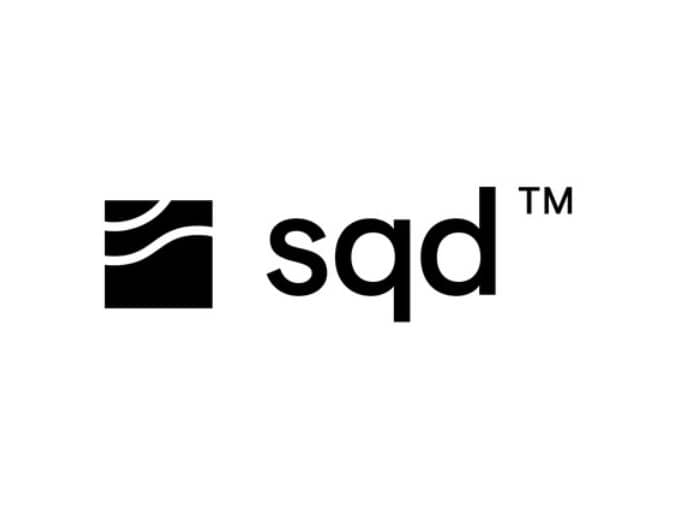위키 구독하기
Share wiki
Bookmark
SQD
SQD
SQD는 확장 가능한 규모로 블록체인 데이터에 대한 권한 없는 액세스를 제공하도록 설계된 분산형 데이터 레이크 및 쿼리 엔진으로, AI 에이전트와 분산형 애플리케이션이 대량의 온체인 데이터를 효율적으로 쿼리하고 처리하기 위한 인프라 계층 역할을 합니다 [1].
개요
SQD(이전 이름은 Subsquid)는 블록체인 기술의 기본적인 과제 중 하나인 기하급수적으로 증가하는 온체인 데이터에 대한 액세스 및 처리 문제를 해결하는 새로운 개방형 데이터베이스 네트워크로 기능합니다. 이 플랫폼을 통해 개발자는 분산 방식으로 블록체인 데이터, 애플리케이션 데이터(디코딩된 스마트 계약 상태), 그리고 관련 오프체인 데이터를 쿼리하고 집계할 수 있습니다 [2].
Web2에서 사용되는 기존의 중앙 집중식 데이터 레이크(예: BigQuery, Snowflake 또는 Apache)와 달리 SQD는 Web3 애플리케이션을 위해 특별히 설계된 분산형 대안을 제공합니다. 이 네트워크는 무한한 수평적 확장성, 권한 없는 데이터 액세스, 신뢰할 수 있는 중립성, 신뢰 최소화 쿼리 및 낮은 유지 관리 비용이라는 몇 가지 주요 특성을 기반으로 구축되었습니다 [2].
SQD 에코시스템은 포괄적인 데이터 인프라 솔루션을 제공하기 위해 함께 작동하는 여러 구성 요소로 구성됩니다. 여기에는 SQD 네트워크(분산형 데이터 레이크), Squid SDK(블록체인 데이터 색인을 위한 개발자 툴킷), 그리고 SQD Cloud(엔터프라이즈급 호스팅 색인 서비스)가 포함됩니다 [1].
기술
SQD 네트워크 아키텍처는 분산형 데이터 인프라를 제공하기 위해 함께 작동하는 몇 가지 주요 구성 요소를 중심으로 구축됩니다.
데이터 제공자
데이터 제공자는 SQD 네트워크에서 제공되는 데이터를 생성합니다. 현재 이 네트워크는 EVM 및 Substrate 체인의 온체인 데이터에 중점을 두고 있으며, Cosmos 및 Solana에 대한 지원을 추가할 계획입니다. 부트스트래핑 단계에서 Subsquid Labs GmbH는 데이터가 수집되는 체인의 프록시 역할을 하며 주요 데이터 제공자 역할을 합니다 블록 단위로 블록 데이터를 수집합니다. 수집된 데이터는 검증되고 압축된 청크로 분할되어 지속적인 저장소에 저장되어 작업자 간에 배포됩니다 [3].
작업자
작업자는 네트워크에 저장 용량과 컴퓨팅 리소스를 제공하며 피어 투 피어 방식으로 데이터를 제공합니다. 각 작업자는 100,000개의 SQD 토큰을 보증하여 온체인에 등록해야 하며, 프로토콜 규칙을 위반하는 경우 슬래시될 수 있습니다. SQD 보유자는 특정 작업자에게 토큰을 위임하여 신뢰성을 표시하고 보상의 일부를 얻을 수 있습니다. 작업자 보상은 각 에포크마다 배포되며 온라인 시간, 제공된 데이터, 위임된 토큰, 공정성 및 활성 상태와 같은 요소에 따라 달라집니다 [4].
스케줄러
스케줄러는 데이터 제공자가 제출한 데이터 청크를 작업자 간에 배포합니다. 데이터 세트 및 작업자 세트의 업데이트를 모니터링하고, 각 데이터 세트에 대한 용량 및 대상 중복도에 따라 작업자에게 새 청크를 다운로드하거나 기존 데이터 청크를 재분배하라는 요청을 보냅니다 [5].
로그 수집기
로그 수집기는 작업자로부터 활성 상태 핑과 쿼리 실행 로그를 수집하여 배치하고 공용 지속적 저장소에 저장합니다. 작업자의 P2P ID로 서명되고 IPFS에 고정된 이러한 로그는 최소 6개월 동안 저장되며 다른 네트워크 참여자가 사용합니다 [6].
보상 관리자
보상 관리자는 각 에포크에 대해 온체인으로 작업자 보상을 계산하고 제출합니다. 보상은 작업자 활성 상태, 위임된 토큰, 제공된 쿼리(바이트 단위로 측정), 등록 이후 활성 상태를 기반으로 합니다. 보상 관리자는 로그에 액세스하고 보상을 계산하며 각 에포크에 대해 청구 가능한 약정을 온체인으로 제출합니다 [7].
쿼리 검증
SQD 네트워크는 쿼리된 데이터의 유효성에 대한 경제적 보장을 제공하며, 온체인에서 특정 쿼리를 검증할 수 있습니다. 모든 쿼리 응답은 쿼리를 실행한 작업자가 서명하여 약정으로 작용합니다. 스마트 계약 검증 로직은 데이터 세트별로 다를 수 있으며, 권한 증명, 낙관적 온체인 검증 및 영지식 증명이 포함될 수 있습니다 [8].
SQD 토큰
SQD 토큰은 SQD 네트워크 에코시스템의 기본 토큰인 ERC-20 프로토콜 토큰입니다. 이 토큰은 Ethereum 메인넷에 배포되었고 Arbitrum One으로 브리징되었습니다. 이 토큰은 에코시스템 내에서 여러 기능을 수행합니다.
잘못된 내용이 있나요?
